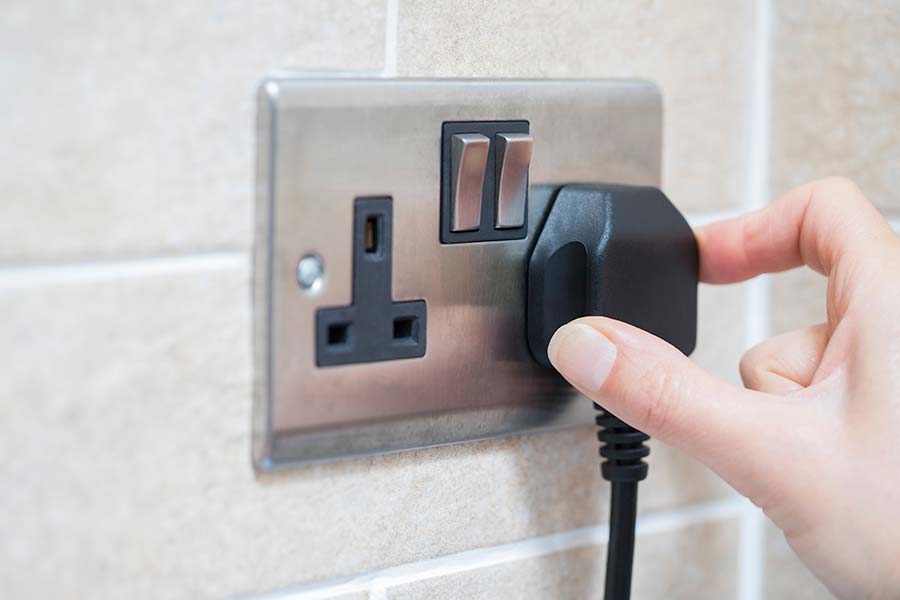Having a single socket that is faulty can be a bit of a nuisance and leave you playing guess the plug whenever you want to connect something.
Diagnosing faulty sockets
We’ve prepared some useful tips to help you diagnose the socket and then the case of the fault.
- To check for faulty sockets throughout your house, plug an appliance into each of them to see if it has power.
- Before you start any repairs, switch off the power at the mains supply.
- Remove plugs from the socket outlet carefully. Pulling out a plug by the cable could damage the contact between the plug and socket outlet. This can result in the plug overheating, its wires becoming loose or even an electric shock (if the earth wire is disconnected).
- Check the plug and socket outlet for burn marks, buzzing or crackling or excessive heat. If any of these things happen we advise you to call in a qualified electrician soon as possible.
Use plugs with the British Standard Safety Stamp – they’re guaranteed to have live and neutral pins with insulating sleeves that enable safer insertion and withdrawal.
Check the shutter mechanisms in the sockets in your home close when removing plugs. This is an important safety precaution if you have young children who like to put their fingers in places they shouldn’t!
Fighting socket struggles?
Need expert help with your sockets? HomeServe Repairs is the answer you’ve been searching for! Whether it’s a simple fix or a more complex issue, our Home Experts will get the root of your problem and give you peace of mind.



![What to turn off before your holiday - checklist [image of washing machine]](https://staging.h032.clients.ontinuity.co.uk/wp-content/uploads/2017/09/whattoturnoffholiday_ft.jpg)
